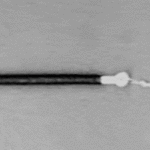1. Among postpartum breastfeeding women with known intrauterine device insertion, 5-year cumulative incidence of device expulsion was highest for insertions at 0-3 days and lowest for >6 to 14 weeks postpartum.
2. Compared to postpartum non-breastfeeding women, breastfeeding at the time of intrauterine device insertion was associated with an approximately 30% lower risk of device expulsion.
Evidence Rating Level: 2 (Good)
Study Rundown: Intrauterine devices (IUDs) are a highly effective form of contraception that are commonly inserted in the postpartum period, most often at 4-6 weeks after delivery. However, they are increasingly being inserted earlier in the immediate postpartum period and it is unclear how this difference in timing of device insertion is associated with maternal breastfeeding and risk of expulsion and unintended pregnancy. This cohort study assessed the association of postpartum timing of IUD insertion in conjunction to breastfeeding status with incidence and risk of IUD expulsion. The main outcomes were incidence rates and adjusted hazard ratios (aHRs), estimated via propensity scores to adjust for confounding. Among 326 658 women who were ≤52 weeks postpartum with known breastfeeding status at the time of IUD insertion, 5-year cumulative incidence of IUD expulsion was highest for insertions at 0-3 days and lowest for >6 to 14 weeks. Overall, the risk of IUD expulsion was low, higher in non-breastfeeding women, but highest in those with insertions at 0-3 days postpartum. Most expulsions were recognized within 12 weeks after insertion. A limitation of this study was the lack of information on lactational amenorrhea which may be associated with risk of expulsion and thus, a confounding factor.
Click to read the study in JAMA Network Open
Relevant Reading: The safety of intrauterine devices in breastfeeding women: a systematic review
In-Depth [retrospective cohort]: This cohort study (APEX-IUD) included 326 658 women (mean [SD] age, 32.0 [8.3] years; 137 102 [42.0%] non-Hispanic White, 38 911 [11.9%] Asian or Pacific Islander; 56 180 [17.2%] Hispanic other) aged ≤50 years with an IUD insertion between 2001 and 2018. Analysis on a subcohort of breastfeeding women at ≤52 weeks postpartum (N = 94 817) was categorized by timing of IUD insertion postpartum: 0-3 days, 4 days to 6 weeks, >6 to 14 weeks, >14 to 52 weeks, and non-postpartum (>52 weeks or no evidence of delivery). Overall, the most common IUDs were levonorgestrel-releasing (259 234 [79.4%]). There were 8943 IUD expulsions, where the 5-year cumulative incidence was highest for insertions 0-3 days postpartum (10.73%; 95%CI, 9.12%-12.61%) and lowest for insertions >6 to 14 weeks postpartum (3.18%; 95%CI, 2.95%-3.42%). Using the non-postpartum IUD insertion cohort as the reference, aHRs were 5.34 (95%CI, 4.47-6.39) for 0-3 days postpartum; 1.22 (95%CI, 1.05-1.41) for 4 days to 6 weeks; 1.06 (95%CI, 0.95-1.18) for >6 to 14 weeks; and 1.43 (95%CI, 1.29-1.60) for those >14 to 52 weeks. Within the subcohort analysis, 5-year cumulative incidence was 3.49% (95%CI, 3.25%-3.73%) for breastfeeding women and 4.57% (95%CI, 4.22%-4.95%) for non-breastfeeding women, where the adjusted HR for breastfeeding vs non-breastfeeding was 0.71 (95%CI, 0.64-0.78).
Image: PD
©2022 2 Minute Medicine, Inc. All rights reserved. No works may be reproduced without expressed written consent from 2 Minute Medicine, Inc. Inquire about licensing here. No article should be construed as medical advice and is not intended as such by the authors or by 2 Minute Medicine, Inc.


